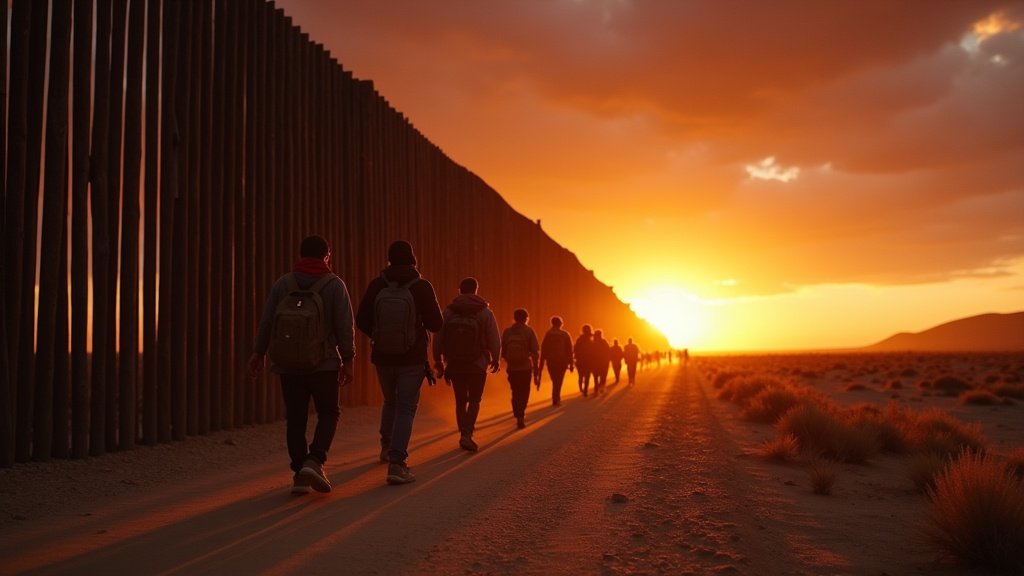CBP data indicates that encounters with migrants at the U.S.-Mexico border in May experienced a slight uptick compared to the preceding months of March and April. This increase comes amidst ongoing debates regarding border security, immigration policies, and the economic impacts of migration.
Border Apprehensions and Sectoral Dynamics
Border Patrol reported 8,725 migrant apprehensions between ports of entry in May, marking a rise from April and March, although still significantly down compared to May 2024. The majority of individuals in CBP custody, comprising 84 percent, were single adults. The El Paso sector, encompassing west Texas and New Mexico, remained the busiest for the fourth consecutive month. Furthermore, this sector also witnessed a substantial increase in the recovery of deceased migrants, underscoring the perilous journey undertaken by many attempting to cross the border.
Simultaneously, apprehensions of unaccompanied minors rose by over a quarter. This rise in apprehensions of minors raises particular concerns, with increased strain on resources for processing and caring for children.
Labor Shortages and Economic Concerns
Concerns are being voiced by various industries, including farms, hospitality, and food service, regarding labor shortages. These sectors often rely on immigrant labor, and the shifts in immigration patterns are raising economic questions. These industries face challenges in filling essential positions, particularly within sectors that often lean Republican. The potential for labor shortages could have far-reaching implications for the U.S. economy, affecting production, service delivery, and overall economic growth.
Political and Policy Maneuvering
In a recent development, a letter from six Republican legislators urged ICE to redirect its focus to migrants with criminal records. This request reflects an ongoing debate about priorities at the border. The focus of ICE, and how resources are allocated, are constantly under scrutiny.
At the same time, the state of Texas has paused funding for its border wall project. Much of the federal spending is earmarked for barrier construction in Texas, where a large portion of the border land is privately owned. This pause in funding could potentially impact the pace and scope of border infrastructure development.
Asylum Restrictions and Potential Risks
The implementation of new policies continues to shape the dynamics at the border. There is some concern that deaths in the border zone may increase due to asylum restrictions. These restrictions could potentially force migrants to take more dangerous routes and heighten the risks associated with border crossings. The increased risk of encountering the elements, as well as potential encounters with criminal organizations, could lead to an increase in the number of deaths. The combination of these factors adds to the urgency and complexity of the challenges at the border.
Conclusion: A Complex and Evolving Situation
The situation at the U.S.-Mexico border remains complex and dynamic, influenced by a combination of factors including policy shifts, economic pressures, and the inherent dangers of the journey undertaken by migrants. The slight increase in migrant encounters in May, coupled with shifting priorities and evolving labor market dynamics, underscores the need for ongoing monitoring and nuanced understanding of the situation. The challenges faced by the Border Patrol, the economic concerns of various industries, and the political debates surrounding immigration highlight the multifaceted nature of this ongoing crisis. The various factors interacting with each other, from apprehensions to deaths, create a high-stakes and evolving landscape.






